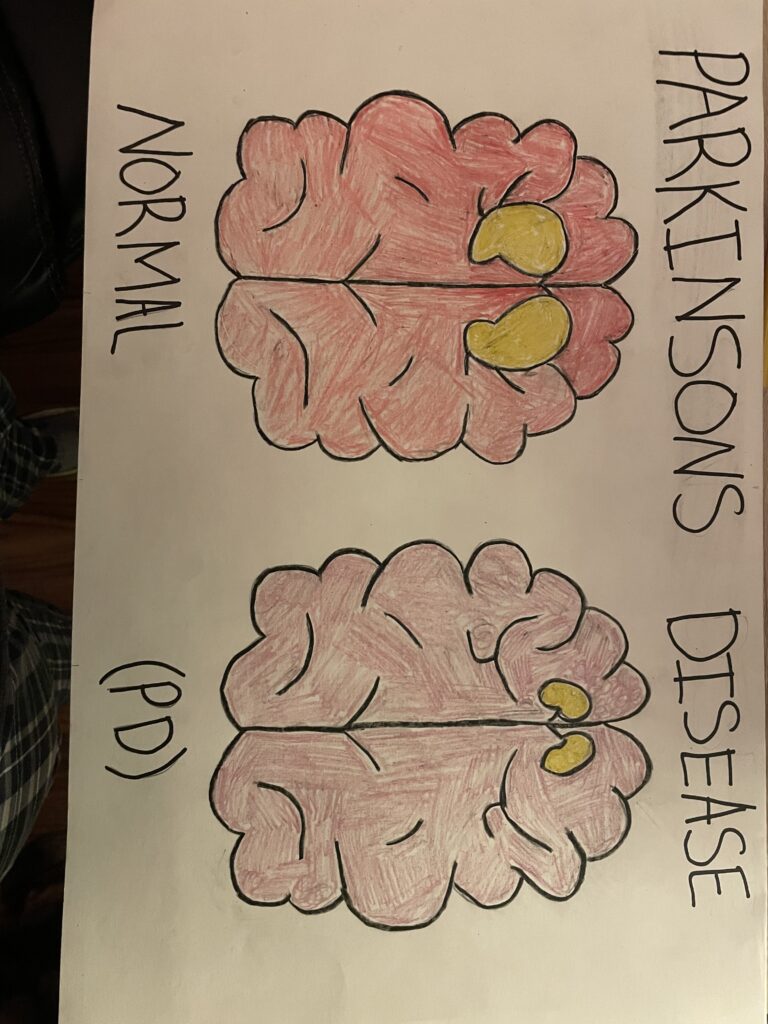Parkinson’s disease is a serious disease that affects the brain and interferes with a person’s motor system and the ability to learn motor skills again. Even the simplest things like walking or using their limbs might cause a great deal of stress due to the fact they can’t control them. Not only basic movements are affected but also their emotions. A person who has Parkinson’s disease may be subjected to increased chances of depression and increased anxiety than a person who doesn’t have Parkinson’s. Living with this disease is very hard for both the person who has it and the surrounding family and friends. The disease is primarily caused by changes to the basal ganglia. The Basal ganglia are in the front of the brain. This part of the brain controls the motor skills of a person. Once this part of the brain is harmed or damaged by a disease, your motor functions will suffer. The basal ganglia contain five parts: caudate nucleus, putamen,globus,pallidus, subthalamic, and substantia. All these parts of the system work together to make sure the brain has the right chemicals it needs to function. An example of a chemical is dopamine or inhibitors. Parkinson’s affects all these parts but it targets one park in the brain in particular which starts the spiral downhill. The substantial is the part of the brain which has a huge effect when damaged. It is an important part of the team because it produces ingredients for the basal ganglia to function. It is also the most sensitive part of the basal ganglia anatomy to be damaged. This is why it is also a sensitive part when a disease causes it to start to degenerate. It’s usually the first to get harmed as it has a huge branching network in the basal ganglia. Once this piece is harmed the rest of the parts in the basal Ganglia are altered right from the beginning the Substantial is the network for the other parts. Having this happen in the brain will cause a domino effect so to speak and will also affect the dopaminergic neurons. Since these neutrons lose this dopamine power produced from this network it affects this part of the brain greatly, causing a visual effect on the body as well. At this point in time, there is no cure for the disease. Although there are some things that can help with treating it. Extensive therapy can sometimes help improve some motor skills. Another treatment is the compound Levodopa. This compound is a precursor of dopamine. Levopad is the most time taken orally for treatments. This treatment has some success but comes with fairly high risks. Some of these risks are dose failure, wearing off, akinesia, dyskinesia, and the occasional on-and-off phenomena. Patients with a history of heart disease can have cardiac arrhythmias. Some more minor effects of the treatment are depression, insomnia, agitation, and worsting anxiety. Overall even there are some treatments that can help with the short-term effect of the person living with Parkinson’s. It will still be very difficult for anyone to live with Parkinson’s as the more it progresses, they will need assistance with completing even the simplest of tasks.
Raskin, S.A., Borod, J.C. & Tweedy, J. Neuropsychological aspects of Parkinson’s disease. Neuropsychol Review, Vol. 1, 185–221 (1990).https://link.springer.com/article/10.1007/BF01112571
Signh, N, Pillay V. Choonara Y.E. Advances in the treatment of Parkinson’s disease. Progress in Neurobiology, Vol. 81(1), 29-44 (2007). https://www.sciencedirect.com/science/article/pii/S0301008206001511?casa_token=sAUUP-KvQ3gAAAAA:AJTC8vvfNkPHMgYt7S94Y2D9Go5_mG6_op15BXyFTMAmPfcgvXAVRGducgdpc9S9wtHYQRa-QBA5.
Parkinson’s disease. Mayo Clinic https://www.mayoclinic.org/diseases-conditions/parkinsons-disease/symptoms-causes/syc-20376055. Accessed 11 Nov. 2022.

